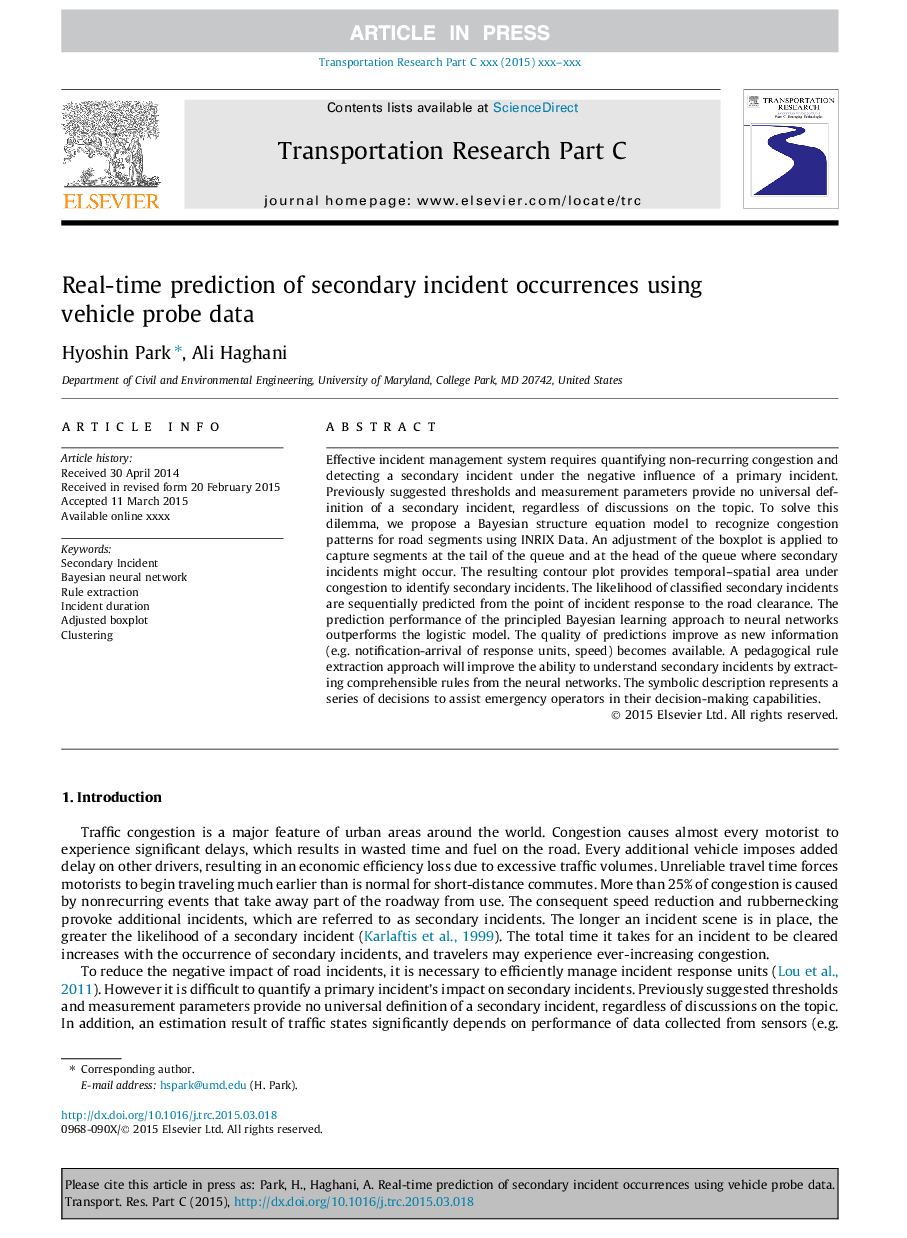| Article ID | Journal | Published Year | Pages | File Type |
|---|---|---|---|---|
| 4968534 | Transportation Research Part C: Emerging Technologies | 2016 | 17 Pages |
Abstract
Effective incident management system requires quantifying non-recurring congestion and detecting a secondary incident under the negative influence of a primary incident. Previously suggested thresholds and measurement parameters provide no universal definition of a secondary incident, regardless of discussions on the topic. To solve this dilemma, we propose a Bayesian structure equation model to recognize congestion patterns for road segments using INRIX Data. An adjustment of the boxplot is applied to capture segments at the tail of the queue and at the head of the queue where secondary incidents might occur. The resulting contour plot provides temporal-spatial area under congestion to identify secondary incidents. The likelihood of classified secondary incidents are sequentially predicted from the point of incident response to the road clearance. The prediction performance of the principled Bayesian learning approach to neural networks outperforms the logistic model. The quality of predictions improve as new information (e.g. notification-arrival of response units, speed) becomes available. A pedagogical rule extraction approach will improve the ability to understand secondary incidents by extracting comprehensible rules from the neural networks. The symbolic description represents a series of decisions to assist emergency operators in their decision-making capabilities.
Related Topics
Physical Sciences and Engineering
Computer Science
Computer Science Applications
Authors
Hyoshin Park, Ali Haghani,
